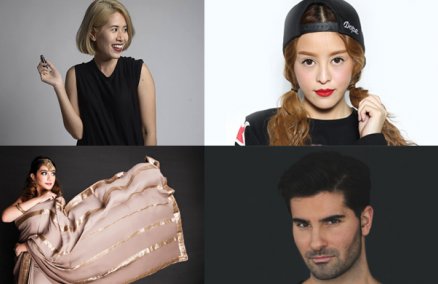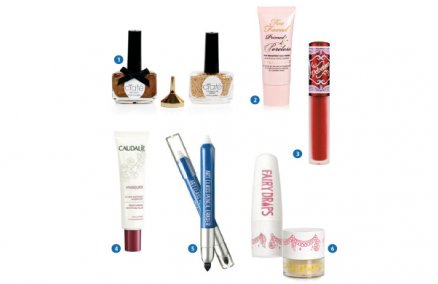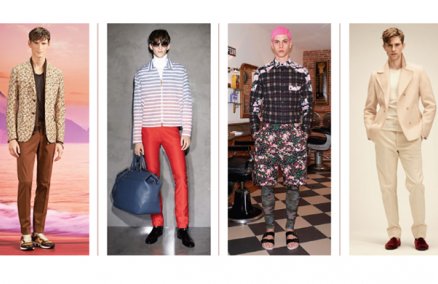There are millions of jobs out there, but some are hotter than others. What qualifies as a hot job? A hot job is one that usually pays well, has few occupational hazards and is often in an industry where there is a shortage of qualified people. A hot job is also, hopefully, fun and/or offers a lot of variety and/or a fair amount of independence. We spoke to Bangkok-based experts and came up with a sampling of five careers you might not have considered: life coach, language consultant, animator/graphic designer, human resource specialist and party planner. Sick of your seat? Read on for the new nine-to-five.
Human Resource Specialist
It hardly sounds exciting—sitting in an office dealing with tons of documents—but if you look closer, being a HR professional can be something with a forward-looking, attractive, challenging, and managerial feel to it. Now more than ever, human resources is a key driving force for any successful company—how well you screen your staff can determine your fate.
“HR managers are often like administrators, not strategic planners as should be the case. Times change and cultures change; now people don’t stay at one job for life. People are always looking for better careers. So apart from selecting the best person for a job, or identifying a true talent amid a sea of competition, HR specialists must learn and perfect the different ways of retaining great contributors in the company, which requires expert knowledge in compensation and training,” Vichien Shnatpaporn, founder and chief of Job Top Gun, explains.
Finding the right person for the job is easier said than done. That’s why big companies are willing to pay huge amounts of money to headhunters to find the perfect person.
It hasn’t happened yet, but if trends continue as expected, there is a high possibility that human resources will be the most desired position in an organization. Taking a look at Toyota’s or Esso’s extremely complex hiring procedures, you’ll understand why it’s such an arduous and time-consuming process. These companies really take care of their employees with incentives, hefty compensation and other great benefits. Companies with lower turnover tend to have better chances to grow, as they don’t have to waste time and money finding new people and training them all the time.
The current crop of HR personnel don’t possess enough real knowledge to find the right people, train them and retain them. To remedy this, universities like Sasin have created Human Resources courses. If you start now, you can soon become the kind of really skilled human resource officer that everyone wants and needs. It might not be the coolest job, but you will be in high demand, and that is pretty cool.
Gary Woollacott
Age: 42
Job: Headhunter at Opus Executive Search
He says: Five years ago, I’d have said financial marketing, human resources and sale marketing were the hottest jobs. For now, I think it’s human resource. Partly it comes from the fact that there’s not a big talent pool here in Thailand. The companies, big or small, fight over the same people with international quality who have English language skills and the attitude to take it forward, rather than go and just do their job. That’s what we do—help people and our clients to meet each other.
Money: 5/5
Fun: 4/5
Challenge: 5/5
Meeting new people: 5/5
Stress: 3/5
Progress: 5/5
Animator/Graphic Designer
Working in the animation industry is work that blends creativity with technology. In the past, very few people who studied animation in school continued on this track for their careers. Back then, the job didn’t pay very well, and you had to mainly work on your own.
“Before I left Bangkok in 1975 to study in the US, we tried to set up a computer graphic group, but there were only like 10 members. When I came back here seven years later, I was so surprised to find loads of people at the meeting,” Kompin Kemgumnird, the director of the animation flick Kan Kluay, recalls.
This industry is growing at a rapid pace here. Animation is everywhere: TV, advertisements, movies, the internet. The Channel 7 series Sudsakorn was a major breakthrough, becoming the most popular cartoon for kids. (The main character “Ja” even had his own solo concert with hundreds of kids in the audience.)
Being a graphic designer in publishing isn’t nearly as lucrative, as there is so much competition. But there are plenty of jobs for animators and program engineers. TV commercials and movies that use CG will push that demand.
“Now it’s just one-tenth or one-hundredth of what we can really achieve. We are now past the primary level, maybe now we’re waiting for the industry to peak. It may be the next five or 10 years, but it will happen,” Kompin, who also teaches at Katana Animation School, predicts.
Up until recently, big companies would go abroad if they wanted a quality animated advertisement. But now, those companies are using local animators—and even companies from abroad have come to take advantage of the domestic talent. Thai production houses are beginning to aim their sights at international targets and at bigger projects. It’s not the most fun job in the world, but it offers you a rare opportunity to challenge yourself with new things, new projects and new characters every day.
Chalermpol Chanthasartratsamee
Age: 29
Job: CG Supervisor at Blue Fairy
He says: I get to do things differently all the time. I enjoy making impossible things appear possible on screen or TV. I have good and bad working days, but I’m proud of the profession, as there’re very few people in this business. It’s a specialized career.
Money: 4/5
Fun: 4/5
Challenge: 5/5
Chances to Meet New People: 3/5
Stress: 4/5
Progress: 4/5
Life Coach
Business coaches have been around for years, but today some are morphing into “life coaches,” kind of a cross between a psychologist and a business consultant. Life coaches are very popular in the US, especially in the form of online or telephone services. In Thailand, it’s pretty new.
A life coach can help clients improve both their personal and professional lives, from age 8 to 88 (and beyond). Clients might be kids who suffer from short attention spans (ADD or ADHD), housewives who feel useless and unwanted, executive managers who want to be chief executives, smokers who want to quit or even broken-hearted souls who want to overcome their sadness.
In most cases, the ideal situation is a life coach who can meet you on any and every occasion. But many experts in the field say that over-the-phone coaching can yield the same successful results. Coaches help a client to set a goal—and then help the person accomplish it. Between sessions, clients are given “homework,” tasks that don’t require all that much time or effort but are designed to reinforce positive behavior and beliefs. Usually there aren’t any fixed courses with time limits; it all depends on the clients’ needs—it can be weeks, months or even years.
A professional life coach can earn up to B5,000 per hour. At present there aren’t any official certification or standards for life coaching, nor are there educational institutions here that offer courses, let alone degrees. It’s not even necessary to have a degree in psychology or any other discipline.
Some wannabes in Thailand attend workshops held by professionals or sign up to be their apprentices. The most important thing about being a coach is that you have to know how to ask questions—questions that can lead a client to what he wants. Now life coaches in Thailand work independently, but the life coach circle is still very small. Most of them are foreigners who target expats. So there’s plenty of room for Thai coaches.
Nisa Wichitsiri
Age: 45
Job: Life Coach
She says: This business is going to work for Thai people, because Thais are quite reserved and they don’t have to tell us anything personal or in detail. They just tell us about their goals, and we help them achieve them. And that makes things easier for me, too, as I don’t have to listen to their failures or unhappy lives. Now there are more foreign coaches, but I think the need of this service among Thais will grow—that’s why I jumped on this opportunity. Most of my clients are Thai, but I coach a few foreigners, too. I think that my job is very challenging as I never get the same tasks—all customers are different and so are their problems.
Money: 4/5
Fun: 4/5
Challenge: 5/5
Meeting new people: 5/5
Stress: 2/5
Progress: 3/5
Language Consultant
If a life coach is a mutation of a psychologist and personal development consultant, here’s another hybrid that combines a language (in this case, English) teacher and personal development consultant. Managing director of Keen English Consulting, Sranya Phaisawang has an MBA in Management Strategy, but her real job is to teach Thais how to better communicate with foreigners—through linguistics training but also cultural education.
Sranya breaks it down for her clients from a westerners’ cultural perspective. Encouraging different thought and communication processes, she helps clients gain confidence and raise standards to “level the playing field”—so the foreigners won’t necessarily have the upper hand. There’s personal and professional development for students, who include people preparing for graduate or post-graduate studies abroad or simply for people who simply have a strong passion for the English language.
For professionals, a language consultant helps develop leadership and networking skills, increase empowerment, promotes better and freer communication, effectiveness and efficiency across the board.
There are very few English consultants here, which means that qualified people like Sranya have an unlimited opportunity to work if they want it.
This job also offers you many chances to meet people in business circles, so you can widen your world or maybe even establish a new business. And money-wise, it’s great. You can get paid up to B7,000 an hour. To teach these complex skills, you have to understand both Thai and western cultures thoroughly—that marks the difference from other English teachers and institutions in the Thai educational industry. You also have to excel in both Thai and English languages, as one of the many “Thai” problems is that they are afraid to talk to non-Thai speakers, and many Thai teachers don’t understand western cultures. If your clients are going to include corporate types, you’ll also need extensive business knowledge.
Sranya Phaisawang
Age: 27
Job: Managing Director of Keen English Consulting Company
She says: We started Keen English as a cross-cultural and language consulting company. I can represent foreigners because I was born and raised in America. We don’t teach ABC English; we don’t really focus on the grammar or that boring stuff, because we believe in Thai people. They’ve studied English since they were born, and Thailand is top-three in grammar, behind Big Red and Taiwan. We teach people how to do business better, how to live better and how to think better using the English language.
Money: 5/5
Fun: 5/5
Challenge: 5/5
Meeting new people: 5/5
Stress: 3/5
Progress: 5/5
Party Planner
In today’s busy world, there is an ever-increasing need for services to simplify people’s lives. One growing industry is party planning, which includes birthday parties, class reunions, family reunions, weddings, holiday parties, company parties or product launches. Different from an event organizer, a party planner’s work relates to a more social and entertaining world. A party planner’s main skill is organization. It’s about dealing with all the people—customers, technicians and specialists like florists and catering staff.
Party planning as an occupation is nothing new here, but is still popular and still can earn you a decent living—Thai people never stop celebrating. Every day there are restaurant grand openings, product launches, bar anniversaries, weddings, birthdays and on and on.
If you are a social animal, this is the job for you. You’ve got so many great chances to meet people. New things come into your life all the time, and there’s a lot of variety. Some projects are big, some small; some take days, others can take months.
Alisara Sirichoomsang
Age: 44
Job: Party Planner of Fanfare Company
She says: There are so many event organizers, so many that I feel alarmed. Everybody now thinks that organizing events is an easy, fun and awesomely great paying job, and it is. It’s the trend now, like when everybody wanted to be DJs and singers before. But our strong point is we’re niche and small, and we can be a one-stop service for small events.
Money: 5/5
Fun: 4/5
Challenge: 4/5
Meeting new people: 4/5
Stress: 3/5
Progress: 5/5



























